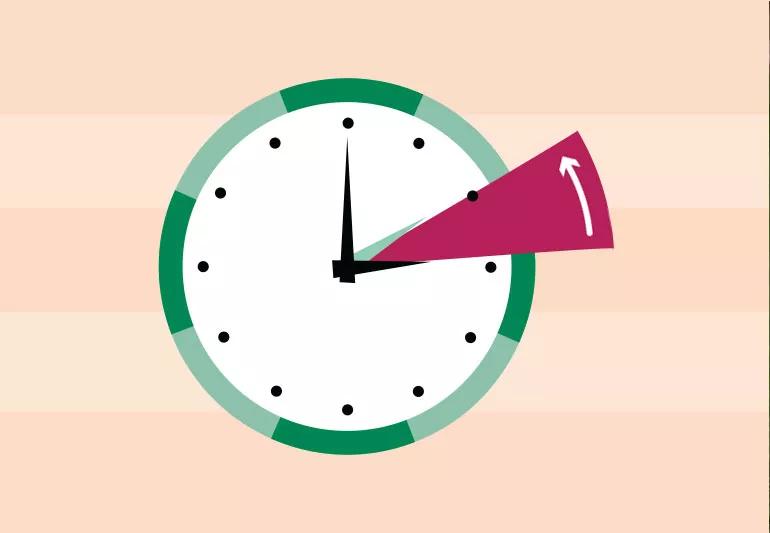How to prevent time-change sleepiness

Moving the clock forward one hour in the spring and back one hour in the fall doesn’t just affect your schedule — it can throw off your body’s internal clock, too.
Advertisement
Cleveland Clinic is a non-profit academic medical center. Advertising on our site helps support our mission. We do not endorse non-Cleveland Clinic products or services. Policy
That hour of sleep that’s lost or gained can leave you feeling groggy and irritable. It can also be dangerous. Studies have found that both heart attacks and fatal car accidents increase after the spring shift to Daylight Saving Time.
“In a nation that is already sleep deprived, losing an extra hour can make a huge impact,” says sleep specialist Harneet Walia, MD.
Adjusting to the time change is different for everyone. Some people adjust in a few days; for others, it takes more time. For your health and safety, Dr. Walia offers these tips for dealing with the time change:
Advertisement
Bedtime routines aren’t just for kids! It’s also important for adults to establish good sleep hygiene habits.
Before bed, slow your body down. Raising your body’s core temperature can make it harder to sleep, so avoid heavy workouts within a few hours of bedtime.
Put your phone, computer or tablet away. Turn off the television and pick up a non-suspenseful book. (Electronics’ high-intensity light stimulates your brain and hinders melatonin, a hormone that triggers sleepiness.)
Staying consistent with the amount of sleep you get each night helps, too — and that includes weekends. “Sleeping in on weekends may sound like a good idea, but it can disrupt your sleep cycle,” Dr. Walia says.
Last but not least, use the bed only for sleeping. “Your mind adjusts to the habit of getting into bed for sleep,” she says.
Advertisement
Learn more about our editorial process.
Advertisement

Alcohol is a depressant and can interfere with your sleep, mood and more

Major life events and trying times can trigger reactive depression symptoms, like prolonged sadness, irritability and hopelessness

Slight increases are somewhat common from either the medication or changed habits

Some medications may result in a few lost pounds, but weight gain is far more common

The medications target different chemicals in your brain to improve mood

Both medications are first-line treatments for depression and other mood disorders

Sitting near a light box for about half an hour a day can help treat this form of fall/winter depression

Light therapy can boost sleep and help fight depression

The ‘sunshine vitamin’ is found naturally in some fish and is added to other foods

Autism and ADHD often go hand in hand, giving rise to the term AuDHD

The Yuzpe regimen is less effective than other forms of emergency contraceptives, and it’s associated with more side effects